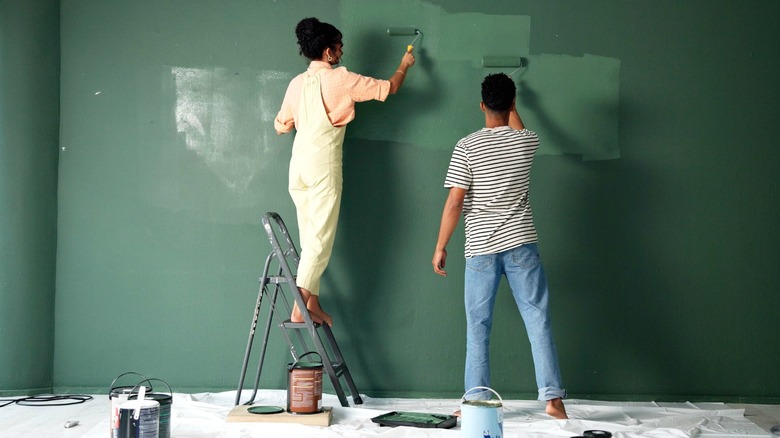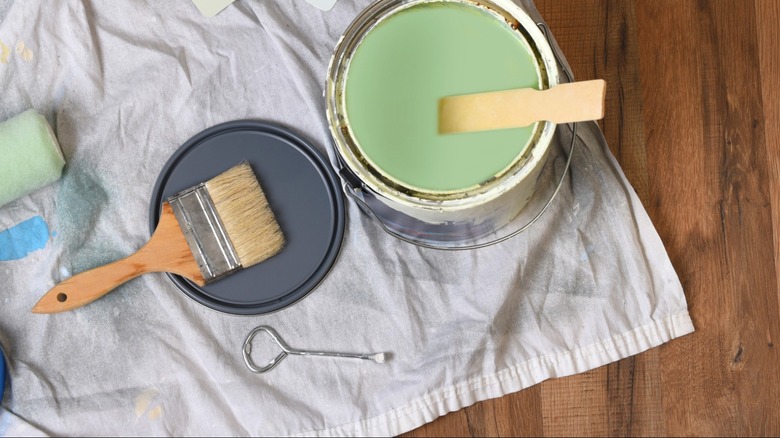The Worst Drop Cloth Material You Could Use While Painting A Room
Painting a room is one of the most satisfying parts of the remodeling process, yet it's also one of the most frustrating. While we love how the end result can give a space new life, there's no denying that painting is a messy process. Worse still, it's a mess that doesn't clean easily, so it's important to choose the right protection for your floors, furniture, and décor.
There's no room for trial and error when choosing a drop cloth if you want to keep your space safe from paint stains. Many DIYers stumble at this point, opting for on-hand materials that can often fail. It might seem like a sensible and clever way to repurpose an old bed sheet or tablecloth, but items like these are too thin and non-absorbent to make effective drop cloths. Reused fabrics may catch some of the paint's moisture. But without generous layering or any waterproof materials, light, breathable drop cloths will let the paint seep right through to the underlying surface.
Even some options that are better for this purpose can be impractical in the wrong place. Plastic drop cloths, for instance, may seem like a great choice. Using them to protect the floor, however, may cause more problems than it will solve. Thin plastic rips easily and won't hold up to prolonged use. Since the material isn't absorbent, paint drips can also leave a dangerously slick surface, and the long drying time will make you more likely to track paint and leave stains around the room.
What should you use for a drop cloth?
Canvas drop cloths are the top choice if you want to paint your home like a professional, offering a thick, resilient cover that stays reliable for several painting sessions. They typically come in 6-, 8-, 10-, and 12-ounce varieties, with durability and protectiveness improving as the thickness increases. You'll generally want to use at least an 8-ounce cloth for painting. Paint dries quickly on canvas thanks to the absorbent, breathable material. Canvas cloths with additional plastic or rubber backings offer extra protection, ensuring nothing bleeds through the cloth to the surface. Some canvas cloths include traction grips for use on floors, stairs, and other potentially slippery surfaces.
The downside to canvas is the cost, so you may want to explore alternatives for use in certain areas. Although not the best choice for floors, plastic drop sheets are ideal for shielding furniture, fixtures, and wall hangings. Repurposed items can also work for features like these; giving it a new life as a drop cloth is a brilliant hack to try before throwing away an old shower curtain, for example. Paper rolls are useful for protecting counters, baseboards, and other areas that might suffer light paint splatter — but you should count on canvas to stand up to spills or traffic on the floor. For your furniture, appliances, and décor, plastic is an inexpensive way to get the protection you need.

